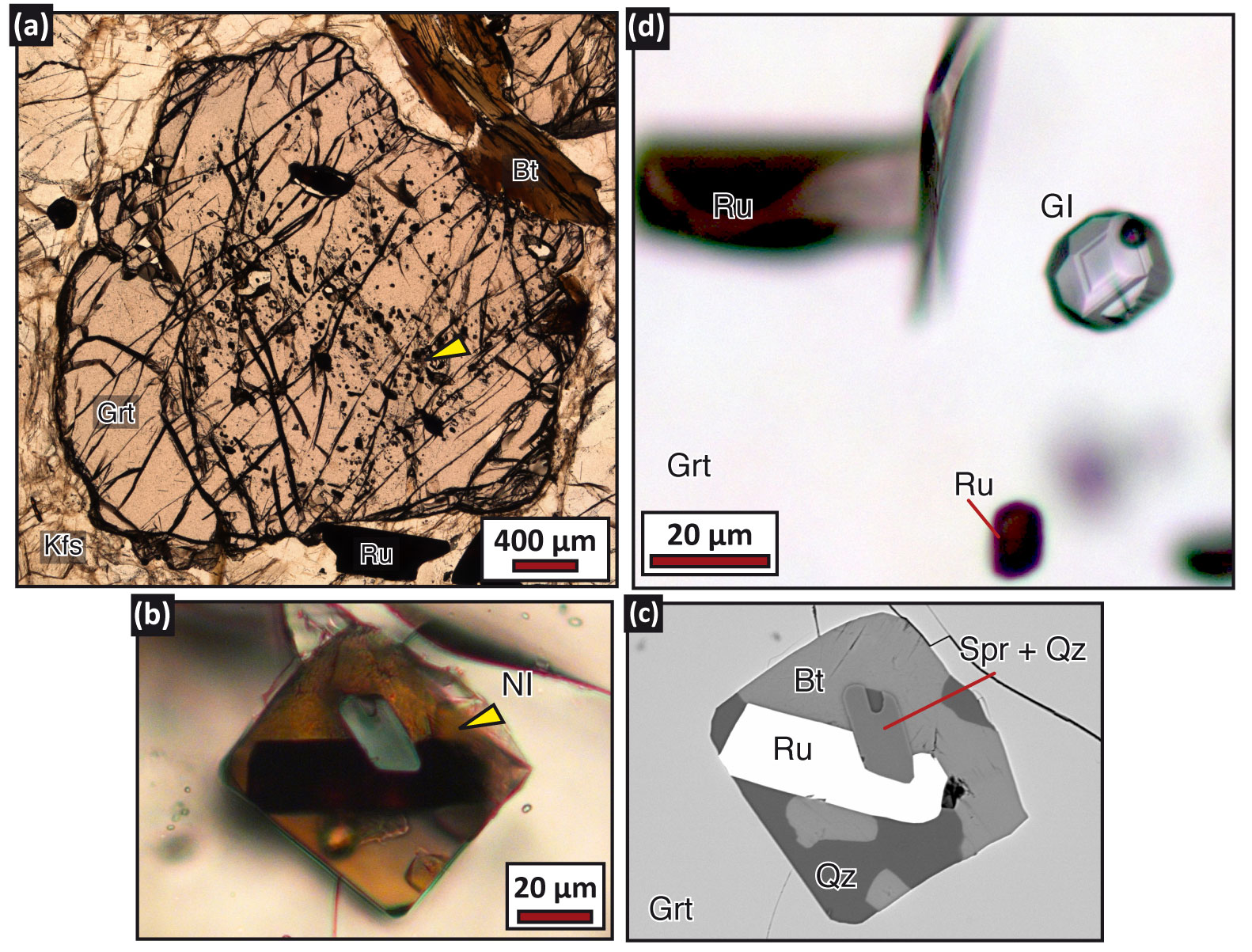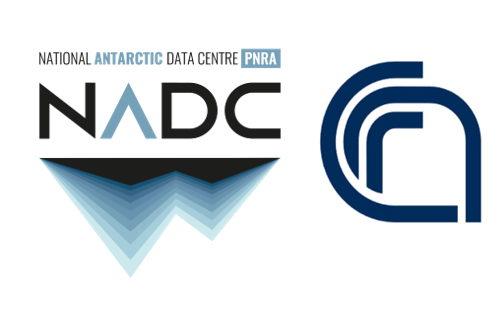Crustal anatexis up to ultra-high temperature conditions in Antarctica (PNRA18_00103 - HotAntarctica).
Below the results obtained by the HOT ANTARCTICA project are presented.
Results regarding geochemistry of crustal melts
Main results obtained by the most prominent samples are described separately for each of the investigated terranes (Napier Complex, Lützow Holm Complex, Rauer Islands and Schrimacher Hills). The methodology employed during the work is also listed below:
1) Samples interrogated in this project were previously collected from Napier Complex (provided by the collaboration with Prof. Simon Harley, University of Edinburgh), Lützow Holm Complex (provided by the collaboration with Prof. Satish-Kumar, University of Niigata), Rauer Islands (provided by the collaboration with Prof. Simon Harley, University of Edinburgh and in collaboration with Zhao Liu, Northwest University ,China) and Schrimacher Hills (provided by the Museo Nazionale dell’Antartide, Siena, Italy).
2) Microstructural and petrographic study were done in all samples to identify equilibrium assemblages, melting reaction microstructures and occurrence of nanogranitoids (i.e. crystallized inclusions), melt and fluid inclusions.
3) Microstructural characterization of inclusions using Field Emission-Scanning Electron Microscope (FE-SEM) analyses were done: i) to identify the submicrometric phases within nanogranitoids and ii) to verify the homogeneity of remelted nanogranites and preserved glassy melt inclusions.
4) Experimental remelting of crystallized melt inclusions was performed to overcome the problem of MI decrepitation and volatile loss. The remelting of nanogranitoids was performed at high pressure with a piston cylinder apparatus using a QUICKpress piston cylinder apparatus produced by Depths of the Earth (installed at the Dipartimento di Geoscienze, UniPd).
5) Analysis of the major and trace elements contents of melt inclusions was carried out using i) an electron microprobe at the at University of Milan and ii) a LAICPMS at University of Perugia.
6) Thermodynamic modeling of anatectic conditions: the evaluation of P-T-X parameters and of P-T paths in the different geologic contexts were carried out using the software Perple_X.
7) Micro-Raman spectroscopy: characterization of fluid inclusions coexisting with melt inclusions was done using a HORIBA LabRam HR (high resolution) Raman microspectrometer at the University of Pavia.
8) Cross-comparison of data: during the development of this research project all collected data were analyzed by cross-comparing the information from the different geological contexts, with the aim to highlight similarities and differences.
9) Data discussion and evaluation: all data was analyzed and discussed in tight collaboration with the researchers involved in this project.
10) Synthesis and dissemination of results: dissemination of results was done with oral and poster presentations in several international conferences (see list on the appropriate section - Atti). Presentations include invited keynote presentations by the PI, Bruna Borges Carvalho at Goldschmidt (France, 2023) and Hutton Symposium (Italy, 2023). Invited seminars were also given in several important universities around the world [University of Bern, Switzerland; University of Cambridge, UK; University of Niigata, University of Kyoto, Japan]. Furthermore, a total of two research papers have been published in journals of high impact factor, and other two articles are in preparation.
Here we also provide mineral, geochemical and geochronological data of studied areas at Rundvagshetta and Rauer Islands. Preprinted versions of two published article where the data is explained are also provided.
Carvalho, B.B., Bartoli, O., Cesare, B., Satish-Kumar, M., Petrelli, M., Kawakami, T., Hokada, T., Gilio, M. (2023). Revealing the link between A-type granites and hottest melts from residual metasedimentary crust. Geology 51, 845-849. https://doi.org/10.1130/G51097 .1
Liu, Z., Carvalho, B.B., Li, W., Tong, L., Bartoli, O., Li, C., Chen, L., ,Yan, Q, Wu, H. 2023. Into the high to ultrahigh temperature melting of Earth’s crust: Investigations of melt and fluid inclusions within Mg–rich metapelitic granulites from the Mather Peninsula, East Antarctica. Journal of Petrology 64, egad051. https://doi.org/10.1093/petrology/egad0 51
Results regarding petrology and geochronology of granulites
In northern Victoria Land, the presence of two contrasting P-T paths suggests the possibility that high-grade complexes could have experienced a different metamorphic evolution both in space and time. Geochronological data of the Granite Harbour Intrusives support a prolonged magmatic activity (540-480 Ma), with multiple igneous pulses. This could imply the existence of magmatic underplating triggering the development of monometamorphic granulites during the Ross Orogeny. On the other hand, structural and PT evolution suggest the presence of a polymetamorphic granulitic belt that could be remnant of older orogeny as the Panafrican (ca. 600-500 Ma) (Lombardo et al., 1987; Palmeri, 1997; Talarico and Castelli, 1995).
In order to discriminate mono- from poly-metamorphic evolution, metasedimentary granulite complex from the Deep Freeze Range has been investigated. Among all available granulite samples, a detailed petrographical study has been conducted to select the most representative and suitable HT granulite-facies rocks: four samples have been individuated for petrological and geochronological analyses (Opx-Grt and >30 µm Zrn/Mnz bearing), fifteen for geochemistry (absence of leucosome).
In the Deep Freeze Range, HT granulites consist of Grt-Opx±Bt±Crd±Spl±Crn gneisses characterized by the presence of numerous Opx±Grt leucocratic segregations.
Geochemical results confirm that analyzed granulite protholites have sedimentary origin, being comparable to Post Archean Australian Shale (PAAS; Taylor and McLennan, 1985), and they have been deposited in an orogenic setting (active continental margin).
Petrographical, microstructural and mineral chemistry analyses show a metamorphic evolution including three different stages: Pl-Grt1-Spl-Crn-Ilm medium-P granulite facies (M1), Qtz-Pl-Opx-Grt1-Crd-Ilm-Kfs low-P granulite facies (M2), and Qtz-Pl-Grt2-Kfs-Bt-Ath low-P amphibolite (M3). Preliminary petrological results indicate that evolving metamorphic parageneses describe an initial isothermal decompression (exhumation event) followed by isobaric cooling; further thermodynamic modeling by software Perple_X will allow to better define P-T-X conditions.
Geochronological studies involved the observation and analysis of monazites and zircons on four selected granulite thin sections. Investigations included X-ray mapping carried out under the electron microscope, CL-BSE imaging (zircons), and trace element analysis and U-Pb dating using LA-ICP-MS. Acquired data are still under review and will have a fundamental role in the reconstruction of the P-T-t path, thus making it possible to discriminate between mono- and poly-metamorphic hypotheses.
References
Lombardo et al 1987. Memorie della Società Geologica Italiana 33, 99-130.
Palmeri R. 1997. Lithos 42, 47-66.
Talarico and Castelli D. 1995. Precamb. Res. 75, 157-174.
Taylor and McLennan S.M. 1985. Blackwell, Oxford, 312 p.
Simple
- Date (Creation)
- 2024-09-20
- Identifier
- https://antarcticdatacenter.cnr.it/geonetwork/srv/api/records/fb76df45-1654-46c0-b827-b4252769fe0f
- Purpose
-
We provide information about the project PNRA18_00103 - HotAntarctica and its already published data and articles for other researchers interested in the geology of high to ultrahigh temperature granulites in Antarctica. The material should be used for noncommercial purposes only, and only so long as attribution is given to the creator.
- Status
- Completed
- Maintenance and update frequency
- Not planned
-
SCAR Gazetteer of Antarctica
-
-
Mills Peak
-
Deep Freeze Range
-
Mount Emison
-
Rauer Islands
-
Victoria Land
-
Rundvågshetta
-
-
GEMET - INSPIRE themes, version 1.0
-
-
Geology
-
-
GCMD - Science Keywords
-
-
GEOCHEMISTRY
-
ROCKS/MINERALS/CRYSTALS
-
METAMORPHIC ROCKS
-
SOLID EARTH
-
- Keywords
-
-
East Antarctica, melt inclusions, ultrahigh temperature granulites, crustal anatexis
-
-
PNRA project
-
-
HOTAntarctica PNRA18_00103
-
-
Research Organization
-
-
Università di Padova
-
-
GCMD - Providers
-
-
IT/PNRA
-
- Use limitation
- Creative-Commons CC BY-NC-SA 4.0
- Spatial representation type
- Text, table
- Denominator
- 1
- Metadata language
- English
- Character set
- UTF8
- Begin date
- 2020-07-01
- End date
- 2023-10-31 Now
- Unique resource identifier
- WGS84
- Distribution format
-
-
FORMATO_DISTRIBUZIONE_DATI (ASCII, CSV, NetCDF...)
(
1
)
-
FORMATO_DISTRIBUZIONE_DATI (ASCII, CSV, NetCDF...)
(
1
)
- OnLine resource
-
PNRA project Hot Antarctica
(
WWW:LINK-1.0-http--link
)
The present project PNRA18_00103 provided a detailed investigation of anatectic rocks from HT to UHT terranes using existent samples from Antarctica accessible through a collaboration with world-renowned researchers in Italy, Japan and UK. The main goal was to better understand the HT-UHT metamorphism and crustal anatexis of different regions in Antarctica through i) the study of small inclusions of melt (nanogranitoids) included in peritectic minerals and ii) the geochronological investigation of migmatites and granulites using multiple techniques.
- OnLine resource
- Rock database Museo Nazionale dell'Antartide ( WWW:LINK-1.0-http--link )
- Hierarchy level
- Dataset
Domain consistency
Conformance result
- Date (Publication)
- 2010-12-08
- Explanation
-
This data set is conformant with the INSPIRE Implementing Rules for the interoperability of spatial data sets and services
- Pass
- Yes
- File identifier
- 31f1644c-1246-4606-be2f-6ec062076ebb XML
- Metadata language
- English
- Character set
- UTF8
- Hierarchy level
- Dataset
- Date stamp
- 2025-05-12T14:21:07
- Metadata standard name
-
ISO 19139
- Metadata standard version
-
1.0

